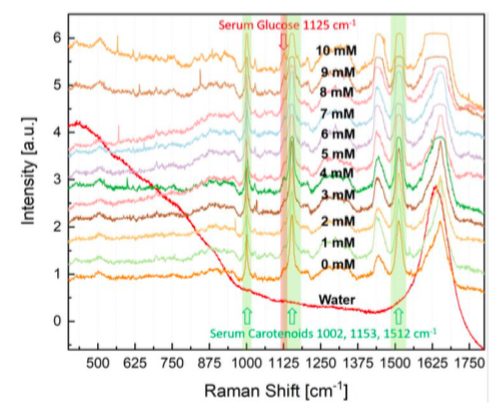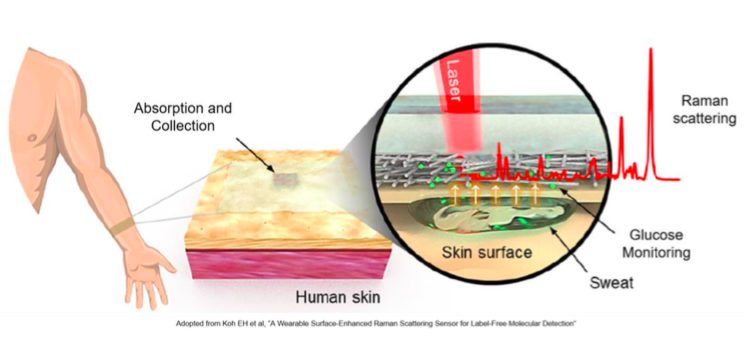Introduction
With diabetes still not having a well-established cure, the regular monitoring of the blood glucose level remains the only way to avoid severe secondary complications through controlled insulin administration. Today, invasive techniques like the fingerstick tests remain the only solutions allowing precise and reliable blood glucose monitoring for diabetic subjects. The development of a non-invasive optical blood glucose monitoring technique would significantly improve the life quality of diabetic subjects and help early detection and prevention of diabetes for healthy ones. In this regard, vibrational spectroscopy, especially Raman scattering, has exhibited substantial promise due to its exquisite molecular specificity and minimal water interference in the spectral profiles acquired from the blood/tissue
.

Project Aim
This project aims to explore the limits of Raman scattering-based sensing miniaturization for mobile blood glucose monitoring. The Raman signature of glucose is well known, and the detection of glucose concentration in liquid solution has been extensively published. Additionally, previously developed a homemade dispersive Raman spectroscopy system will familiarize the student with the application of Raman scattering in glucose monitoring in various body fluids. The master/semester student will closely collaborate with a Ph.D. student already working on this topic.

Project Tasks
- Getting familiar with the theoretical principle of coherent and stimulated Raman spectroscopy
- Realizing a portable system for Raman spectroscopy on glucose by off-the-shelf components
- Exploring the advantage of using the highly sensitive CMOS light sensor developed at ICLAB and the impact on required power and specifying the minimum requirements for a vibrational spectroscopy glucose sensor
Prerequisites/desired competences:
The candidate should preferable have the following skills:
|
References: Golparvar, A. Boukhayma, T. Loayza, A. Caizzone, C. Enz, and S. Carrara, “Very Selective Detection of Low Physiopathological Glucose Levels by Spontaneous Raman Spectroscopy with Univariate Data Analysis,” 2021. Golparvar, A. Boukhayma, C. Enz, and S. Carrara, “Optimized Detection of Hypoglycemic Glucose Ranges in Human Serum by Raman Spectroscopy with 532 nm Laser Excitation,” 2022. Golparvar, A. Boukhayma, C. Enz, and S. Carrara, “Rapid, Sensitive and Selective Optical Glucose Sensing with Stimulated Raman Scattering (SRS),” 2022. |